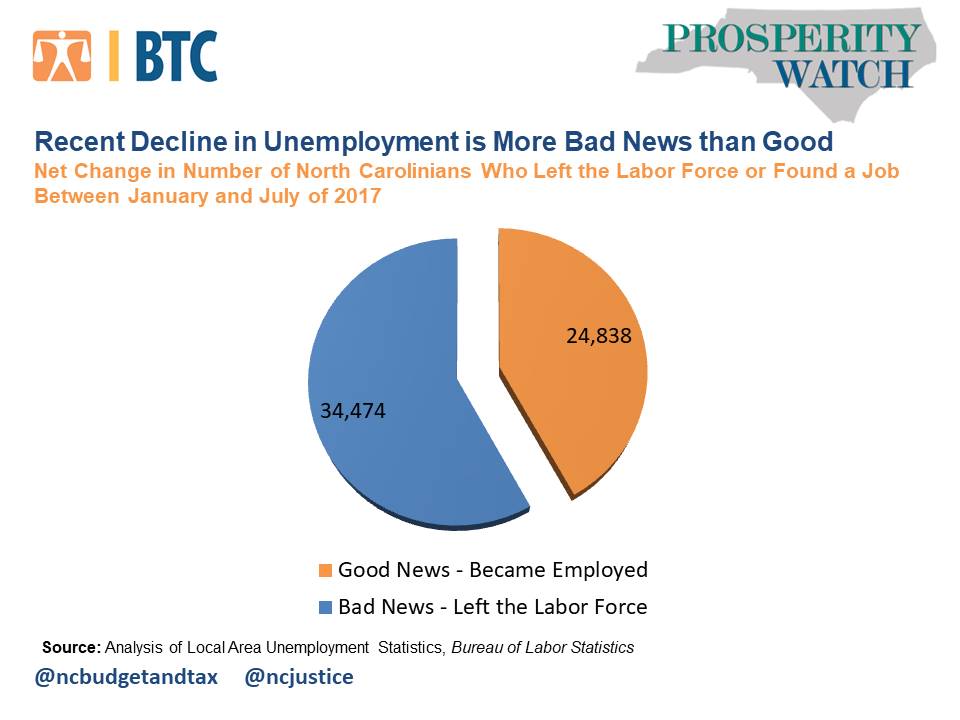Between January and July of this year, the number of people looking for work fell by over 60,000, driving the headline unemployment rate down from 5.3 to 4.1 percent. That may sound like great news, but things are not all as they seem on the surface.
More than half of the net decrease in unemployment is actually the result of people leaving the labor market all together instead of finding work, sending a strong signal that many North Carolinians still struggle to find decent employment.


To grasp how a decline in the unemployment rate can be partially a bad sign, it’s important to understand how that rate is calculated in the first place. When economists designed the unemployment rate, they recognized there are many reasons that someone may not be working that should not result in them being counted as officially unemployed, like retired people, students, and people caring for dependent family members. To deal with this reality, economists created the concept of the “labor force”, which includes people who are working or actively looking for work, and the headline unemployment rate is calculated based on the total size of the labor force, not the total population. As a result, the unemployment rate will fall if someone finds a job or if they give up on finding work in the near term.
Looking at the last seven months in North Carolina with this in mind, it’s easier to see why the declining unemployment rate is actually a mixture of both good and bad news. The number of employed North Carolinians has increased by almost 25,000 since January (good news), but nearly 35,000 people left the labor force during the same timespan (bad news). This combination of good and bad trends means that North Carolina has made no progress this year in elevating the share of state residents with a job, which stood at 58.8 percent in both January and July.
One crucial thing to bear in mind when contemplating these trends is that many people have dropped out of the labor market in recent years because there simply aren’t enough jobs in their local labor market, not just for expected reasons like retirement. Job seekers currently outnumber openings in roughly four out of every five counties in North Carolina, and in 30 of the state’s 100 counties there are at least two people seeking employment for every available job. Compound this with shifts in the types of jobs that exist in many communities, a lack of transportation options to where jobs are located, and other barriers facing those who want to work, and it’s clear many more North Carolinians would prefer to be in the labor market than is currently the case.
The headline unemployment does not really tell this deeper story and, given the consequences we all face when willing North Carolinians cannot find work, it’s a story that we can’t afford to ignore.
 Justice Circle
Justice Circle